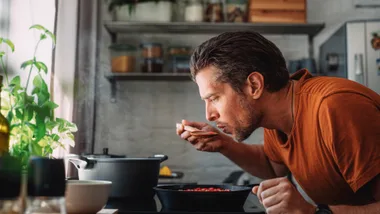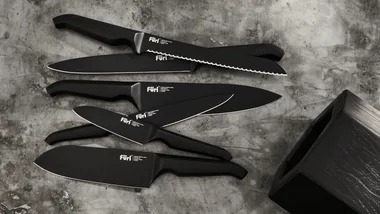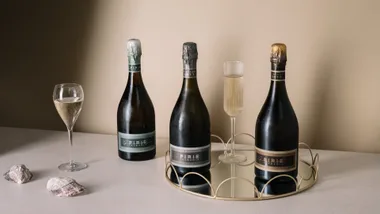Some people see the world divided by those who live to eat and those who eat to live. For me, the pertinent split is between those for whom packaging performs a basic function and those who see it as one of life’s great pleasures. I was that kid, the one who was far more interested in preserving the pretty box and ribbon than in playing with the extravagant present it held.
I’m not alone, of course, in being tantalised by the likes of brown-paper packages tied up with string. The Victorians loved elaborate giftwrapping, including intricately designed papers, and cornucopias filled with sweet surprises and hung on the Christmas tree. In Japan, the art of packaging is just that – a centuries-old art form that sees even humble pieces of fruit treated to arrangements of paper, bamboo and twine so intricate they defy all sense of material value, fly in the face of mass production and consumerism, and, perhaps most alluringly, speak of mercantile habits long forgotten. Or maybe not so forgotten?
Modern retailers understand the importance of packaging to a luxury brand, and few do it better than the French. Think of the irresistible pastel boxes of pâtisserie chain Ladurée. Yes, Ladurée’s pâtisserie is all wonderful, delicious, but I wonder just how renowned it would be if it weren’t for the fairy-tale trimmings. Those picture-perfect boxes printed with fine rococo garlands, dressed in printed satin ribbons with matching pistachio-green bags – the decadence of it all belies the relative simplicity of the macarons within. Ladurée’s international celebrity has been bolstered by those of us who carefully dust out the last sugary crumbs, re-tie the ribbons around the boxes and cart them home so they’ll find a new life housing cufflinks, silver teaspoons and other such treasures.
The most prized pieces in my collection – the holy grail of food packaging – are two round wooden cheese boxes salvaged from gigantic wheels of Rouzaire Camembert and Brie de Melun. There’s also the handmade glass amphora, once home to unthinkably expensive olive oil, that now dispenses bubble bath. But alcohol companies are the masters of the opulent bottle – none more so than Crystal Head Vodka, which offers its clear spirit in an extraordinary and sculptural glass skull.
Moving from glassware to tinware provides plenty of joy, too. There are tea canisters (Singapore’s TWG and France’s Mariage Frères are among the most covetable), tiny Italian pastille containers from Pastiglie Leone, and regal biscuit tins from London’s Fortnum & Mason.
Of course, the investment in beautiful packaging is a clever marketing initiative for a brand. There are, for example, thousands of Google entries devoted to creative ways to re-use old Bonne Maman jam jars with their signature gingham-print lids – the best ideas can be found on the French company’s own website. And even though I already own a year’s supply of Dijon mustard, those squat stone pots of Pommery Moutarde de Meaux with their olde-worlde labels are impossible to resist. (They make great herb vases in the kitchen. Or pencil pots. And mustard sandwiches are just delicious. Really.)
Re-using and “upcycling” certainly helps to curb the environmental guilt surrounding this sort of frivolous packaging, but it also heightens the experience of the product, extending its value and its “shelf life” well beyond its perishable contents.
Restaurants have been joining in the fun, too. Greenhouse in Perth serves its drinks in upcycled jam jars; Kitchen by Mike in Sydney uses vivaciously illustrated Italian tomato tins as centrepieces and cutlery holders; Cumulus Inc. in Melbourne serves its Ortiz anchovies straight from the hallmark tin.
Even when the fashion for this type of ornamentation subsides, there’s a chance that holding on to my collection will pay dividends. Vintage glass milk bottles are fetching surprisingly big numbers on eBay, especially considering their former ubiquity. The same goes for 1940s milk-glass Vegemite jars (which make gorgeous tealight holders, by the way). But as any collector will tell you, there’s only one good reason to collect: because it brings happiness.
The same logic applies to gift-giving, of course – and this is where beautiful packaging really comes into its own. It can make you feel as indulged as a kid on Christmas morning.
 Chris Chen
Chris Chen




-(10).png?resize=380%2C285)



